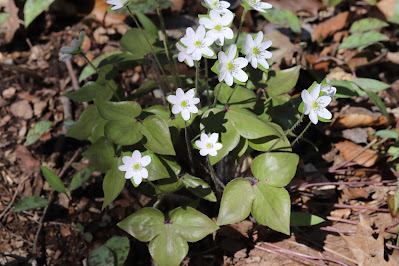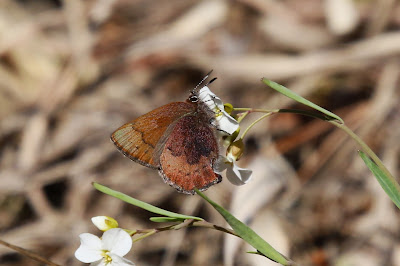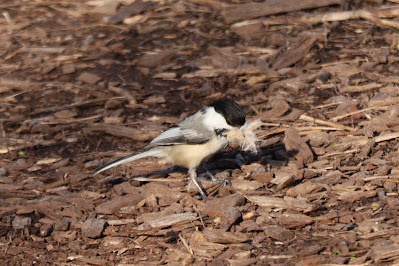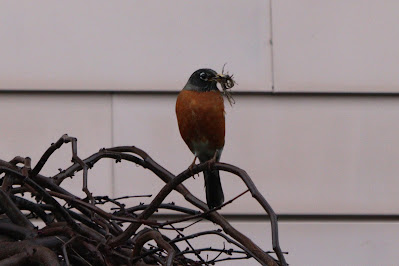Nest Building Has Begun!
A female Red-winged Blackbird closely inspected somebody else's nest! Maybe she was thinking of saving her energy and using this one? However, Red-winged Blackbird nests are placed low among vertical shoots of cattails, rushes and sedges. Females wind stringy plant material around several close, upright stems and weave in coarse, wet vegetation to make a cup.
https://www.allaboutbirds.org/guide/Red-winged_Blackbird/id
Male and female Black-capped Chickadees excavate a cavity in a tree. Once the nest chamber is hollowed out it averages 21 cm in depth. The female builds the cup-shaped nest hidden within the cavity, using moss and other coarse material for the foundation and lining it with softer material.
https://www.allaboutbirds.org/guide/Black-capped_Chickadee/lifehistory#nesting
A Black-capped Chickadee vigorously gathers soft seed fluff trapped between pieces of mulch on a trail in Canatara Park.
A female House Finch busily gathered sticks, while the male supervised nearby. House Finches will nest in a variety of locations including trees, shrubs, buildings, street lamps and hanging planters. The nest is a cup made of fine stems, leaves, rootlets, thin twigs, string, wool and feathers. The width is between 1-3 inches and 2 inches deep.
https://www.allaboutbirds.org/guide/House_Finch/id
Female American Robins build the nest from the inside out, pressing dead grass and twigs into a cup shape using the "wrist" of one wing. Once the cup is formed, she reinforces the nest using soft mud gathered from worm castings to make a heavy, sturdy nest. She then lines the nest with fine dry grass.
https://www.allaboutbirds.org/guide/American_Robin/lifehistory#nesting
Male European Starlings choose the nest site and use it to attract females. The nests are virtually always in a cavity. Male Starlings begin building the nest before mating takes place, filling the cavity with grass, pine needles, feathers, trash, cloth and string. Females oversee the final arrangements and may discard some of the material the male added.
https://www.allaboutbirds.org/guide/European_Starling/lifehistory
Ground preparation! Canada Geese nest on the ground, usually on a muskrat mound or other slightly elevated site near water. They prefer a spot where they can see in many different directions. The female selects the site and does much of the nest construction. She does all the incubation while her mate guards her and the nest.
https://www.allaboutbirds.org/guide/Canada_Goose/lifehistory
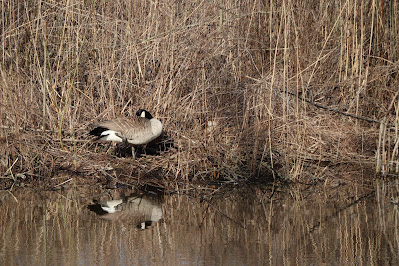
Male Canada Goose on the left is guarding his mate, hidden amongst the grasses and sitting on the nest.












